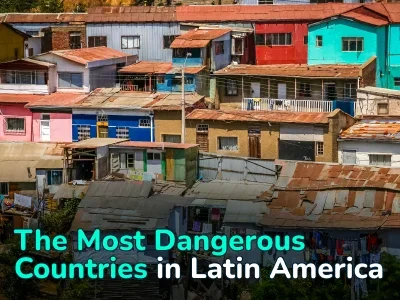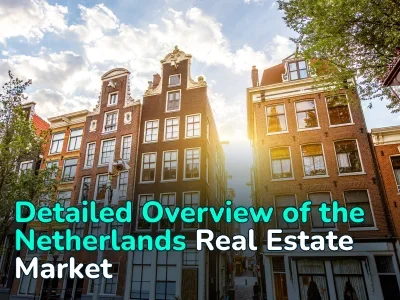
Where Can I Buy a Cheap Apartment in Spain? Top Most Affordable Municipalities
In recent years, interest in Spanish real estate has increased significantly. As of 2025, the main driver of demand is non-resident foreign buyers. They account for about 133,000 property transactions, or around 18% of all sales in the country.
High demand continues to push up prices, especially due to the insufficient pace of new housing construction. According to Idealista, Spain’s largest real estate portal, property prices grew by 1.4% between June and July 2025, which is a remarkable figure given that the average annual increase in Europe ranges between 2% and 6%.
These price levels encourage buyers to look for alternatives. The recent ranking by Idealista answers a key question: where in Spain can housing still be purchased at a relatively low cost? The study identified the municipalities with the most affordable real estate. We examined which places made the list and on what criteria.
How the Cheapest Areas to Buy Property in Spain Were Analyzed
Idealista is the largest online real estate platform in Spain and serves more than 40 million users every month. It is also popular in Italy and Portugal. The data collected by the platform are used by banks, research agencies, and the Spanish Ministry of Housing to analyze market trends.
For its ranking of the municipalities with the cheapest housing, Idealista’s analysts focused on prices for second-hand properties across the entire country. Only municipalities with enough listings were included in order to produce a statistically representative median price per square meter.
The analysts also considered:
- Price dynamics over the past 12 months.
- The balance between supply and demand in the secondary market.
- Regional location, including province and autonomous community.
Top 10 Most Affordable Municipalities in Spain to Buy Property
According to Spain’s National Statistics Institute (INE), there are 8,131 municipalities across the country. The final list compiled by Idealista includes 25 of them, with the top ten showing average prices ranging from €338 to €443 per square meter.
Almadén (Ciudad Real, Castilla-La Mancha)
Almadén is recognized as the most affordable municipality in Spain to buy a home. The average price per square meter here is €338, the lowest in the country. The town is located in the province of Ciudad Real, in the southern part of Castilla-La Mancha.
In the past, Almadén was a major center for mercury mining and industrial production, but after the mines were closed, the town experienced a steady decline in population. At the same time, the historic center of Almadén is listed as a UNESCO World Heritage Site, and the area has potential for the development of domestic tourism.
Puertollano (Ciudad Real, Castilla-La Mancha)
Puertollano ranks second in the list, with an average price of around €346 per square meter. It is also located in the province of Ciudad Real, within the Castilla-La Mancha region. Historically, Puertollano was an industrial hub for coal mining and petrochemical production. Today, however, the municipality is shifting toward cleaner industries related to green energy, particularly hydrogen production. Much of its housing stock was originally built for industrial workers, which still defines the character of local residential areas.
Pedro Muñoz (Ciudad Real, Castilla-La Mancha)
Pedro Muñoz shares the same average price as Puertollano, at €346 per square meter, ranking third in the housing affordability list. It is located in the same province of Ciudad Real, in Castilla-La Mancha. The local economy is primarily based on agriculture and agri-food production.
Although Pedro Muñoz does not have an industrial base, its location among other low-cost municipalities and its relatively accessible transport connections make it an appealing option for investors looking for inexpensive properties.
La Villa de Don Fadrique (Toledo, Castilla-La Mancha)
La Villa de Don Fadrique ranks fourth, with an average property price of around €368 per square meter. The municipality is located in the province of Toledo, still within the autonomous community of Castilla-La Mancha. Compared to the previous municipalities in the ranking, it is situated much closer to Spain’s central regions. Thanks to its shorter distance from economically active areas and better infrastructure, Don Fadrique is potentially more attractive than most other municipalities in the top ten.
Peñarroya-Pueblonuevo (Córdoba, Andalusia)
Peñarroya-Pueblonuevo, located in the province of Córdoba, Andalusia, takes the fifth position with an average housing price of €411 per square meter. Historically, the town’s development was driven by a network of factories, workshops, and metallurgical plants, forming one of Andalusia’s key industrial centers in its heyday.
However, during the 20th century, industry began to decline. The closure of mines and many metalworking and manufacturing facilities led to population loss and a significant decrease in economic importance.
Malagón (Ciudad Real, Castilla-La Mancha)
Malagón is also located in the province of Ciudad Real, within the autonomous community of Castilla-La Mancha. The average price per square meter is €422, although property liquidity remains low. The local economy is mainly based on agriculture, with vineyards and olive groves surrounding the town.
The main advantage of Malagón is its relatively close location to the province’s main infrastructure hubs. It is about 170 kilometers from Madrid via highways A-43 and N-401. In theory, this proximity could improve prospects for resale or rental, though in practice this remains limited.
Bembibre (León, Castilla y León)
Bembibre, compared with most other municipalities in the ranking, is located in the northern part of Spain, in the province of León, within Castilla y León. The average property price is €425 per square meter. Despite its access to the A-6 motorway, Bembibre remains largely isolated from coastal markets, which are about 200 kilometers away through mountain routes. Logistically, the municipality is difficult to reach, and tourism is rare.
Barruelo de Santullán (Palencia, Castilla y León)
Barruelo de Santullán, in the province of Palencia, Castilla y León, ranks eighth with an average price of around €428 per square meter. It is a small mountain municipality with fewer than 1000 residents, originally built around now-closed coal mines. Today, the local economy depends mainly on agriculture and small-scale rural tourism. Due to weak demand, property here remains among the cheapest in northern Spain.
Villanueva de los Infantes (Ciudad Real, Castilla-La Mancha)
Villanueva de los Infantes is located in the province of Ciudad Real, in the region of Castilla-La Mancha. The municipality is known for its well-preserved late Renaissance historic center and is part of the Campos de Montiel cultural route.
Thanks to its architectural and tourist appeal, Villanueva de los Infantes stands out among the other municipalities in the ranking. Properties here are generally in better condition, and the chances of finding a buyer are higher. The average price remains around €443 per square meter.
Almansa (Albacete, Castilla-La Mancha)
Almansa closes the top ten, with housing prices averaging around €452 per square meter. The municipality is located in the province of Albacete, also within the autonomous community of Castilla-La Mancha, and has a stronger economy compared with most other municipalities on the list.
The region lies on the transport corridor between Valencia and Murcia, making it an important logistics hub. This economic activity supports higher employment levels and a lower rate of population decline, giving Almansa a more stable outlook than many other low-cost areas in Spain.
Other Municipalities Included in the Top 25 Most Affordable Towns in Spain
In addition to the first ten municipalities, the Idealista ranking includes fifteen more towns where property prices remain well below Spain’s national average of €2,471 per square meter:
- Baena (Córdoba, Andalusia) — €465/m².
- Lucena (Córdoba, Andalusia) — €472/m².
- Villanueva de Córdoba (Córdoba, Andalusia) — €479/m².
- Hellín (Albacete, Castilla-La Mancha) — €486/m².
- Montijo (Badajoz, Extremadura) — €491/m².
- Andújar (Jaén, Andalusia) — €494/m².
- Alcaudete (Jaén, Andalusia) — €498/m².
- Guareña (Badajoz, Extremadura) — €499/m².
- Montilla (Córdoba, Andalusia) — €505/m².
- Navalmoral de la Mata (Cáceres, Extremadura) — €509/m².
- Villafranca de los Barros (Badajoz, Extremadura) — €512/m².
- Cabra (Córdoba, Andalusia) — €515/m².
- Talarrubias (Badajoz, Extremadura) — €517/m².
- Campo de Criptana (Ciudad Real, Castilla-La Mancha) — €520/m².
- Villanueva de la Serena (Badajoz, Extremadura) — €523/m².
Almost all of these municipalities share a similar profile: limited local demand, a high proportion of vacant homes, but also well-developed agricultural infrastructure and relatively accessible logistics.
Trends in the Spanish Real Estate Market in 2025
By 2025, the Spanish real estate market has entered a phase of strong contrasts. While prices continue to rise in coastal regions and major cities, the country’s inland areas remain stagnant. The gap between the averages is striking, reaching up to a sevenfold difference — from €338 per square meter in Almadén to almost €4,800 per square meter in the Balearic Islands.
One of the main factors shaping Spain’s property map is the depopulation of inland regions. According to data from the National Statistics Institute (INE), over the past decade the population of interior provinces has declined by 10–15% on average. This demographic decrease has led to an oversupply of housing, much of which is outdated and in need of renovation.
At the same time, migration flows are moving in the opposite direction — toward large cities and tourist regions, where jobs, universities, and economic activity are concentrated.
Despite low liquidity, Spain’s low-cost municipalities are gradually being seen not as a problem but as a new investment segment. Over the past two years, the country has seen growing interest in lifestyles away from major urban centers while maintaining access to modern technologies.
According to Idealista, the number of searches for country houses larger than 120 square meters in inland Spain increased by 17% between 2024 and 2025, especially in the provinces of Toledo, Jaén, and Córdoba.
Government policy is also slowly shifting in favor of these territories. The Plan for Recovery, Transformation, and Resilience, financed by the European Union, provides subsidies for the restoration of rural homes and the development of local tourism. However, poor transport links and unstable internet access remain the main obstacles for remote and low-cost municipalities.
Summary
This ranking clearly shows that the Spanish real estate market is highly fragmented. On one side are the highly sought-after coastal regions, and on the other, tens of thousands of square kilometers of inland Spain, where the average property price is six to seven times lower.
At the same time, these low-cost municipalities have development potential, particularly through domestic migration. For foreign buyers and investors, however, this segment represents a long-term investment niche, with a planning horizon of at least five to ten years.
If the trends observed in 2025 continue, the price imbalance between coastal and inland areas could begin to narrow over the next five years, bringing infrastructure development and economic revitalization to Spain’s interior regions.
Author
I write informative articles about real estate, investments, job opportunities, taxes, etc.






















